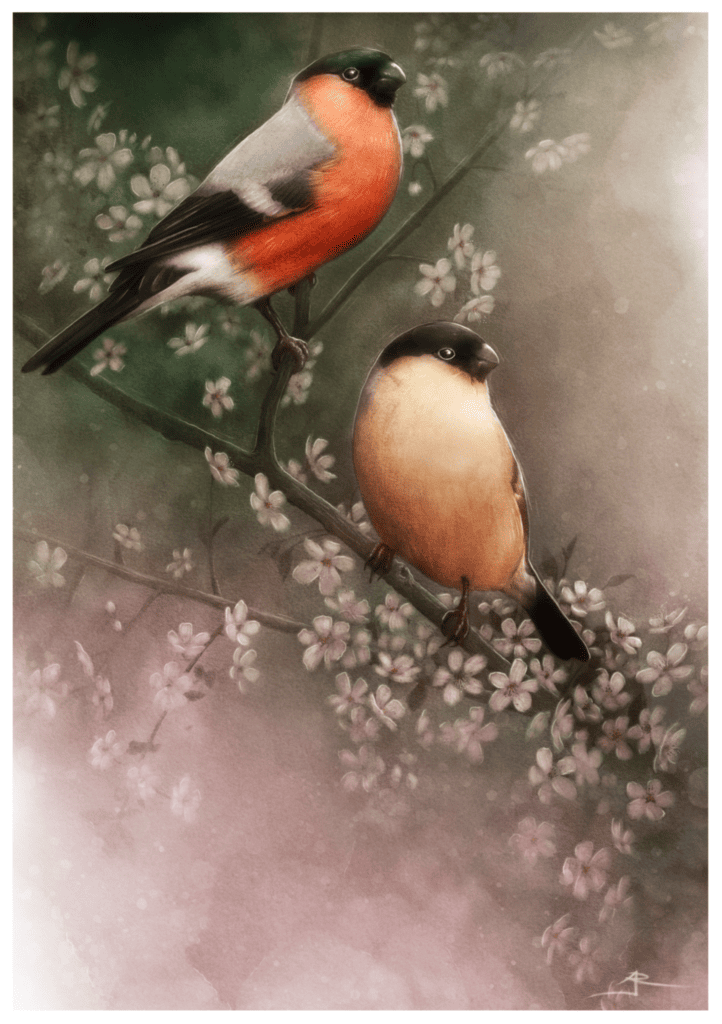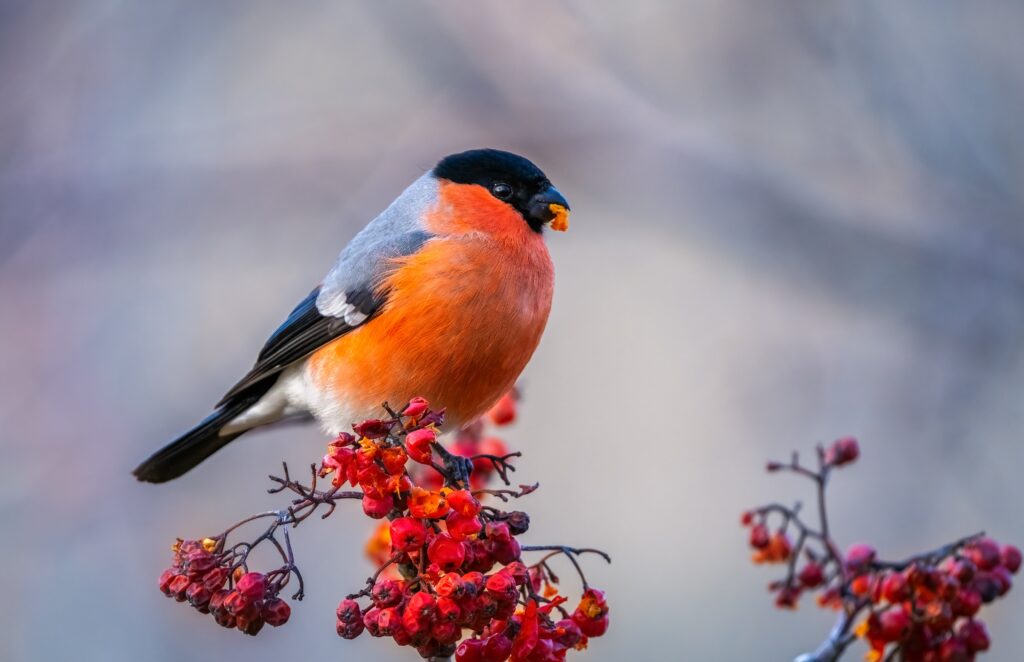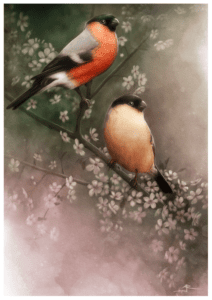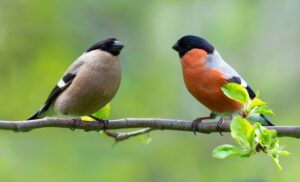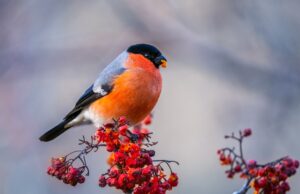Get To Know The Bullfinch
You’ll recognize the male Bullfinch by its bright pink breast and cheeks, slate grey back, and bright white rump. Females typically have a duller grey-pink breast.
In the spring, you may find Bullfinches in the branches of budding trees. Once considered a pest in fruit crops for this behaviour, Bullfinches are now a prized spot for any birdwatcher.
Key Facts:
Scientific Name: Pyrrhula pyrrhula
Bird Family: Finches
Diet: Seeds, buds, and insects (for young).
Population: 265,000 pairs breeding annually
Measurements: Length: 14.5-16.5 cm/ Wingspan: 22-26 cm/ Weight: 21-27 g
Conservation Status and Threats
Bullfinches are on the amber list for UK birds because of their declining numbers. Their biggest threats include the loss of habitats, such as woodlands and orchards.
In the past, thousands of Bullfinches were killed every year to prevent them from eating the buds of fruit trees. Today, they are protected by the Wildlife and Countryside Act.
Nesting and Breeding Habits
Bullfinches make their nests out of moss, twigs, and lichen in bushes and shrubs. They breed from May to July and typically lay 4 to 5 eggs. After hatching, the chick will stay in the nest for 12 to 16 days before fledging.
When and Where to See Them
Bullfinches can be found all year in the woodlands, orchards, and hedgerows across the UK and Ireland. You may notice their mournful, whistled call before you catch a glimpse of their red cheeks or the flash of their bright white rump.
Visit the Fairy Glen or Fen Drayton Lakes RSPB reserves for your chance to spot Bullfinches.
How You Can Help
You can help the Bullfinch thrive by using recycling programs that can decrease pollution and by supporting the RSPB.
Volunteer: RSPB Volunteering Program
Donate: RSPB Donation Page
About The Artist
Andrew is a traditional artist and illustrator, specialising in pencil and watercolours, also blending hand-drawn artwork with digital colours. Working out of his studio in Sheffield, UK, he creates work mostly for pop culture, and is particularly known for landscapes inspired by movies, but he also draws inspiration from nature, history and music.
Instagram: @andrewrowlandart
About Our Partner
The RSPB is the UK’s largest nature conservation charity, working locally in the UK, and around the world. Our vision is a shared world where wildlife, wild places, and all people thrive. We act by protecting and restoring habitats, saving species, and helping to end the nature and climate emergency. Nature is in crisis. Together we can save it.
For all licensed Products sold by Historiart, Historiart will donate a minimum of £10,000 per annum to RSPB Sales Ltd, which gives all its distributable profits through Gift Aid to the RSPB.
Manufactured under licence from RSPB Sales Limited to raise awareness of the RSPB (charity registration in England and Wales no 207076 and Scotland no SC037654).
